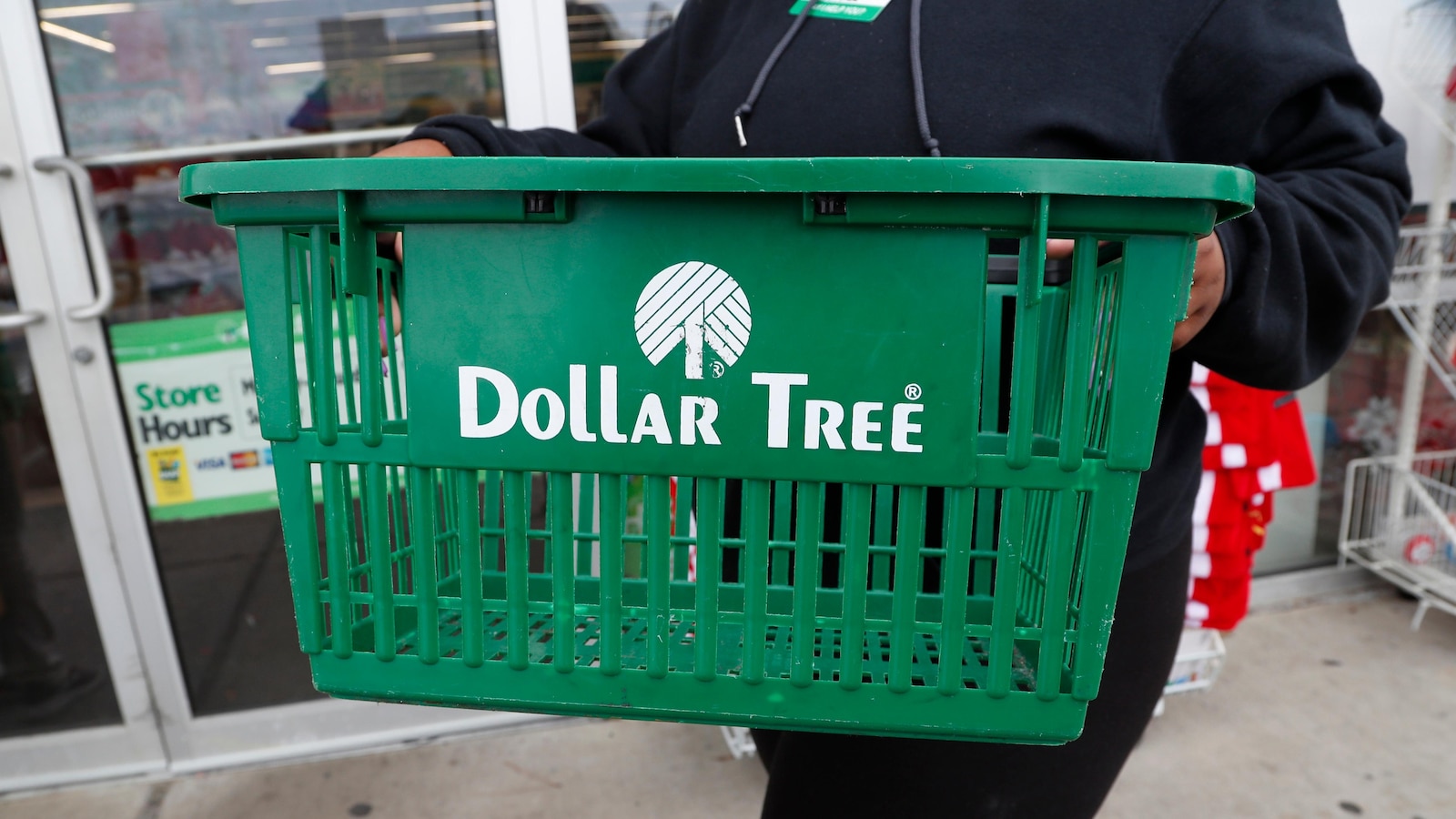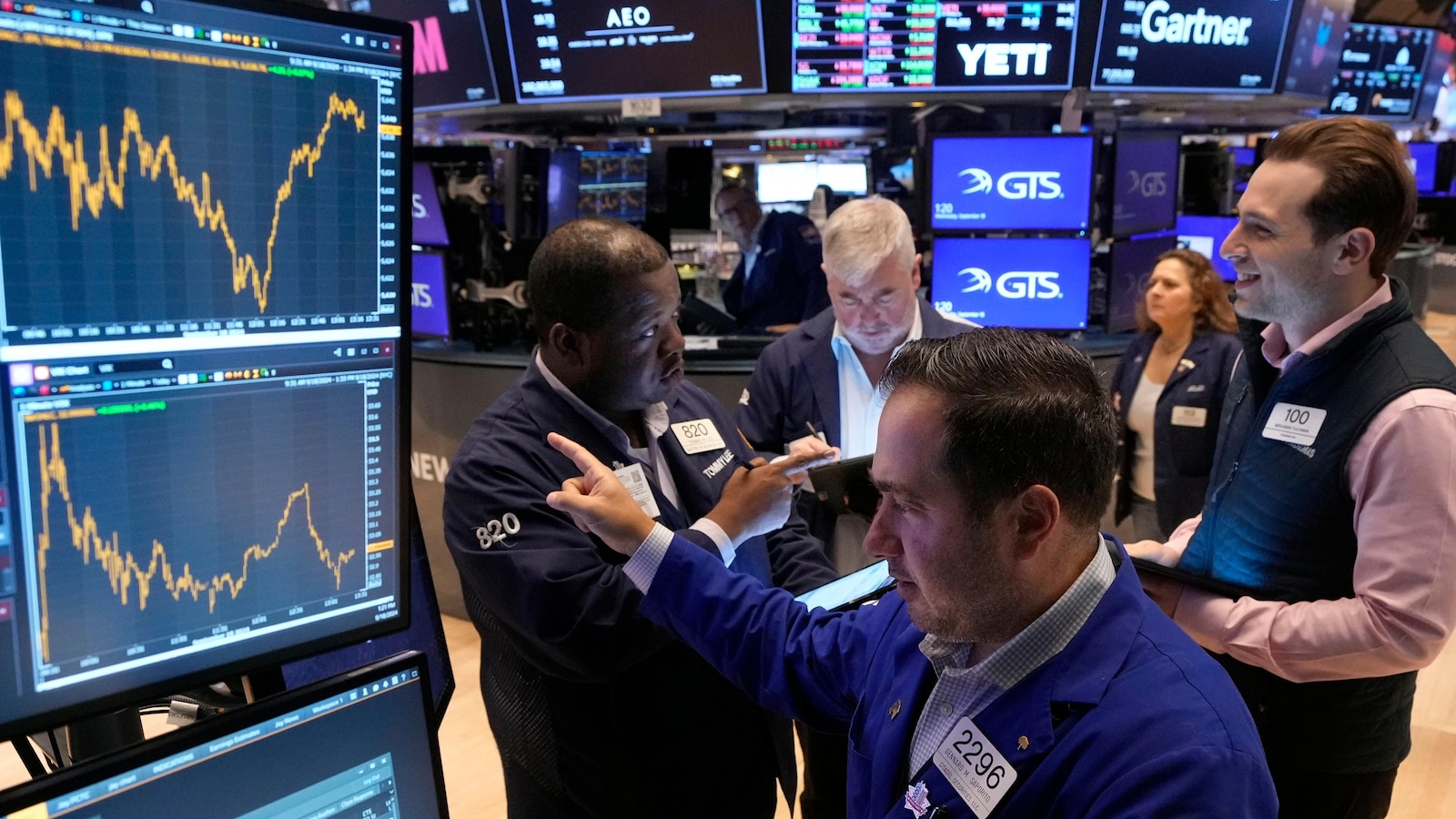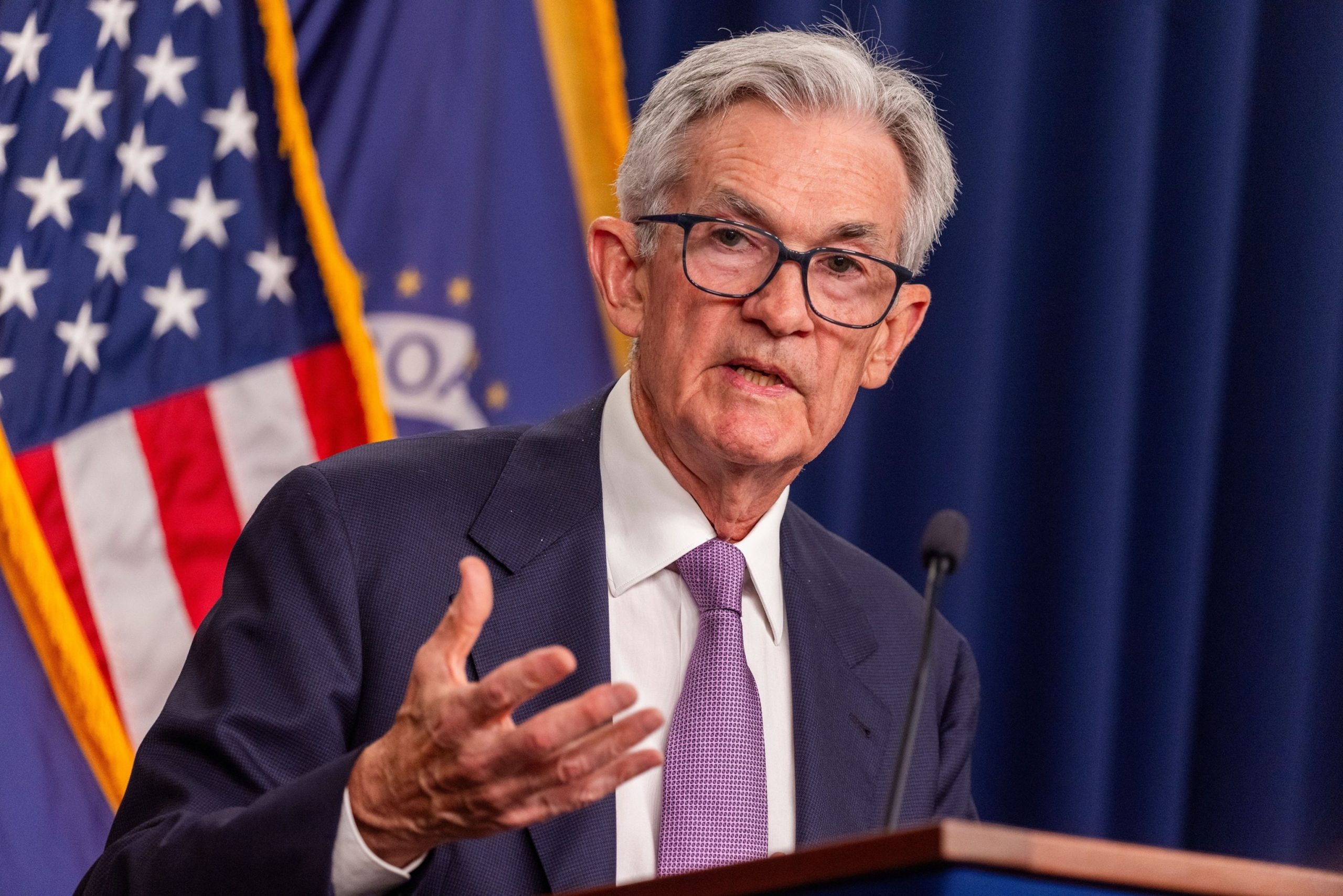
Dollar Tree is slashing its full-year earnings and sales forecasts as its customers continue to struggle with higher prices and spend less.
Shares tumbled more than 20% Wednesday after hitting a 52-week low on the prior day. The biggest one-day sell-off for Dollar Tree shares in more than 20 years arrived less than a week rival bargain chain Dollar General reported a dismal quarter and suffered its largest single-day slump ever.
Dollar Tree has been trying to lure customers from other retailers using its rock-bottom prices, but juggernauts like Walmart and Target have also said their customers are under pressure and they’re cutting prices, too.
That has left little leeway for bargain stores because huge chains like Target are cutting prices on groceries, a huge draw for customers who are likely to shop for other items at Target and skip an additional trip to a dollar store.
“Dollar stores have lost market share to larger retailers that have broadened their offerings and gained customer loyalty through everyday low prices,” said Jharonne Martis, director of consumer research, analytics and AI at LSEG.
And the economic headwinds that first hit low-income customers at Dollar Tree appear to be climbing upward to those who are better off, according to company executives.
“Dollar Tree has a broader customer base that includes more middle and upper-income households and beginning this quarter, we started to see inflation, interest rates, and other macro pressures have a more pronounced impact on the buying behavior of these customers,” said Chief Operating Officer Mike Creden.
Dollar Tree now expects full-year adjusted earnings between $5.20 and $5.60 per share, down from a range of $6.50 to $7.
The Chesapeake, Virginia, company also projected annual sales in a range of $30.6 billion to $30.9 billion, down from $31 billion to $32 billion. Both of those numbers fall short of Wall Street projections and it showed in the retailer’s plunging stock Wednesday.
Dollar Tree’s second quarter adjusted revenue was $7.37 billion, short of the $7.5 billion that analysts surveyed by Zacks Investment Research expected.
Dollar Tree earned $132.4 million, or 62 cents per share, for the period ended Aug. 3. Stripping out certain items, earnings were 67 cents per share, 36 cents short of Wall Street projections.
Though inflation is slowing, Americans continue to struggle with sharply higher prices for such necessities as gas, food and housing compared with their pre-pandemic levels.
For the third quarter, Dollar Tree anticipates adjusted earnings between $1.05 and $1.15 per share, with revenue in a range of $7.4 billion to $7.6 billion. That, too, is shy of Wall Street expectations for per=share earnings of $1.31 and revenue of $7.58 billion.
Dollar Tree is also wrestling with internal problems that have hampered growth.
In June the company said that it was looking at strategic options for the Family Dollar stores that it owns, including a possible sale.
Dollar Tree acquired Family Dollar nearly a decade ago for more than $8 billion after a bidding war with Dollar General. But it’s had difficulty incorporating Family Dollar into its business and recently announced that it would close nearly 1,000 stores, with most of them being Family Dollar locations.
“On the bottom line, net income is down by a third,” said Neil Saunders, managing director of GlobalData. “The overall impression is that Dollar Tree has quickly moved from a company that was advancing to one that is simply treading water. Though, to be fair, most of this is because of the troubles at Family Dollar.”
As the cost of living continues to rise in the United States, bargain chains are starting to feel the impact as Americans are forced to cut back on their spending. From dollar stores to discount retailers, these stores have long been a go-to for budget-conscious consumers looking to stretch their dollars further. However, with prices on everyday items like groceries, gas, and housing on the rise, many Americans are finding it harder to make ends meet.
One of the main reasons for this spending pullback is the increase in inflation rates across the country. Inflation refers to the general increase in prices for goods and services, and it can have a significant impact on consumers’ purchasing power. As prices rise, consumers are forced to either spend more money on the same items or cut back on their purchases altogether. This can be especially challenging for low-income individuals and families who rely on bargain chains to make their limited budgets stretch further.
Another factor contributing to the spending pullback at bargain chains is the ongoing supply chain disruptions caused by the COVID-19 pandemic. These disruptions have led to shortages of certain products and increased shipping costs, which are ultimately passed on to consumers in the form of higher prices. As a result, many Americans are finding that they can no longer afford to shop at their favorite discount retailers as frequently as they once did.
In response to these challenges, bargain chains are being forced to adapt their business models in order to stay afloat. Some stores are raising their prices in an effort to offset rising costs, while others are offering fewer discounts and promotions to make up for lost revenue. Additionally, some bargain chains are expanding their online presence in an effort to reach more customers and drive sales in a more cost-effective manner.
Overall, the spending pullback at bargain chains is a clear indication of the financial strain that many Americans are currently facing. As prices continue to rise and inflation rates remain high, consumers will likely continue to cut back on their spending at discount retailers in order to make their limited budgets stretch further. It remains to be seen how bargain chains will navigate these challenges in the months and years ahead, but one thing is clear: the impact of rising prices on American consumers is undeniable.


